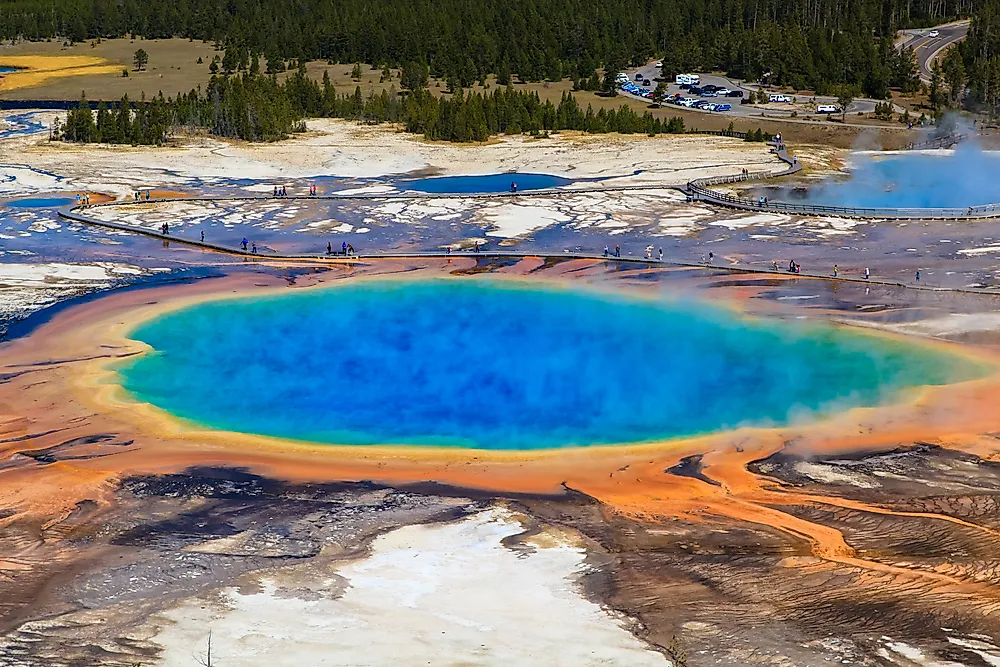What are Volcanic Hotspots?

Volcanic Hotspots
In geological terms, volcanic hotspots are volcanic regions below which volcanism occurs because of a rising mantle that is hotter than surrounding mantle. The rising mantle is as a result of lava activity from underneath and may even erupt from time to time. The position of tectonic plate boundaries in volcanic hotspots does not in any way affect the hot mantles. In many cases, hotspots remain constant while tectonic plates move further away thus leaving a trail of volcanoes, the oldest being the furthest away from its original location. There are different suggestions as to the origin and composition of volcanic hotspots.
Origin of Volcanic Hotspots
There are two generally accepted hypotheses that explain the origin of volcanic hotspots. The first hypothesis describes the formation through the mantle plumes that rise from beneath and forms a pierce-through known as thermal diapirs that runs from the core of the Earth to the mantle. Another hypothesis explains that the lithosphere gives way in form of small cracks in order for the molten rock to rise and form volcanoes while the surrounding plate tectonics move in one direction. The Arago Hotspot, Iceland Hotspot, Hawaii Hotspot, and Yellowstone Hotspot are some of the examples of volcanic hotspots.
Composition of Volcanic Hotspots
The majority of volcanic hotspots consist of extrusive igneous rock (basalt) that have formed over the years due to rapidly cooling lava that is exposed at the Earth’s surface. This non-violent-eruption formation makes the rocks cool quickly and form crystals. For volcanic hotspots that are within the continental regions, magma rises onto the continental crust and forms rhyolites which have high chances of forming violent eruptions. If and when rhyolites completely erupt, the next eruptions are usually of basaltic magma that rises through the cracks in the lithosphere to the continental crust. However, hotspots should never be confused with island volcanoes because they have different origins from islandic arc volcanoes.
Arago Hotspot
Arago Hotspot got its name from the French Naval Ship Arago that discovered the hotspot in 1993. The Arago Hotspot is part of a group of shallow coalescent volcanic features in the Southern Pacific Ocean including the Society and Macdonald hotspots. Within the group, Arago has a shallower origin whereby as the Pacific plate tectonics moved over the hotspot, they carried older volcanoes leaving new ones to form. The hotspot activity led to the formation of Arago seamount and other seamounts within the last 120 years.
Geography and Geology of the Arago Hotspot
The Arago seamount lies 81 miles to the southeast of Rurutu. The South Pacific Superswell in the Southern Pacific Ocean is very shallow, approximately 2,300 feet spread over an area of 1,900 miles by 1,900 miles. This area also has mantle plume spread underneath therefore forming the surface hotspots. The Arago Hotspot is part of the 1,400 miles long series of atolls and islands that form the Cook Islands and Austral Islands. Geologists believe the Arago may have formed by means of shallow plumes (62 miles deep) evidenced by the absence of an oceanic plateau and slight seismic activity measured in the year 2009. Currently, Arago has only two active hotspots.











